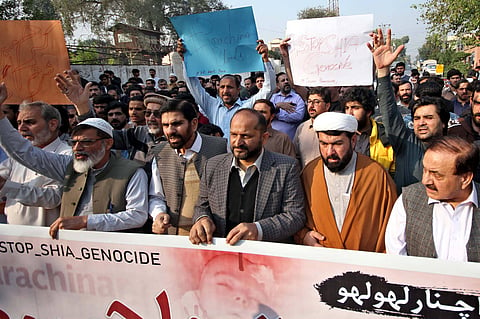Residents of Parachinar and Peshawar protest against the recent attack on a convoy of over 100 vehicles carrying Shias in Parachinar, which saw at least 130 people killed. The attack is part of the decades-long, bloody history of violence and persecution targeting the Shia Muslim community in Kurram – like elsewhere in Pakistan.IMAGO / Newscom World
Politics
Brutal Parachinar attack exposes deepening hatred against Shia Muslims in Khyber Pakhtunkhwah
Attack on Shia convoy, part of ongoing sectarian bloodshed in Kurram district, shows how Pakistan’s government, Sunni majority and Islamist militant groups have left Shias dehumanised and fighting for their lives
On 22 November, a haunting video from Pakistan surfaced on social media. In it, a vehicle filled with the dead bodies of Shia Muslims sped through a crowded road in Kurram district, in the country’s northwest. A man’s lifeless body dangled out from an open door, his leg dragging along the ground, as children and young men pelted the vehicle with sticks and stones. A silent crowd looked on.
The vehicle was part of a convoy of over 100 vehicles with Shias traveling that day from Parachinar – a Shia-majority area in Upper Kurram, near the Afghanistan-Pakistan border – to Peshawar. A similar convoy was travelling from Peshawar to Parachinar. Both were under the security forces’ protection.

